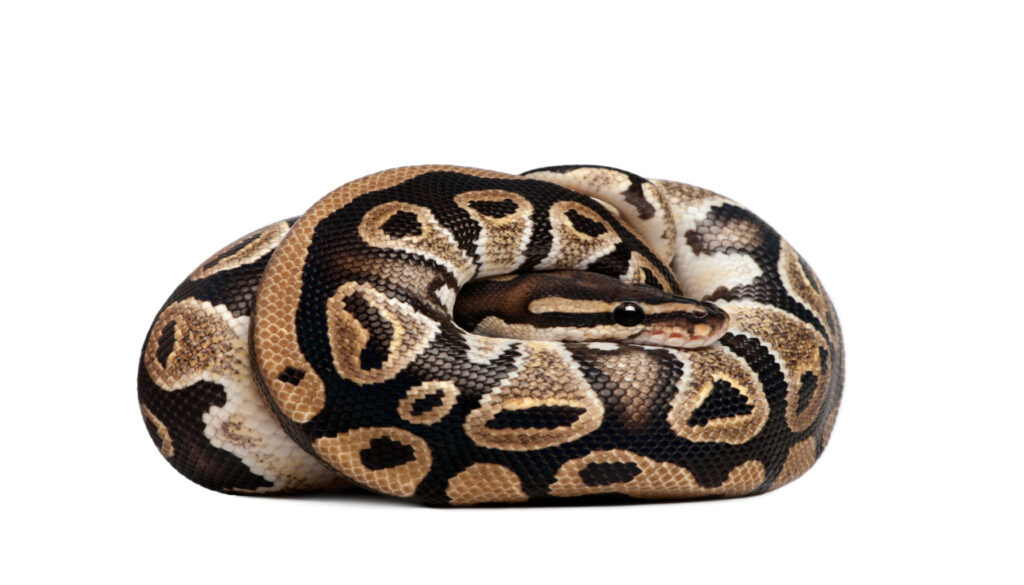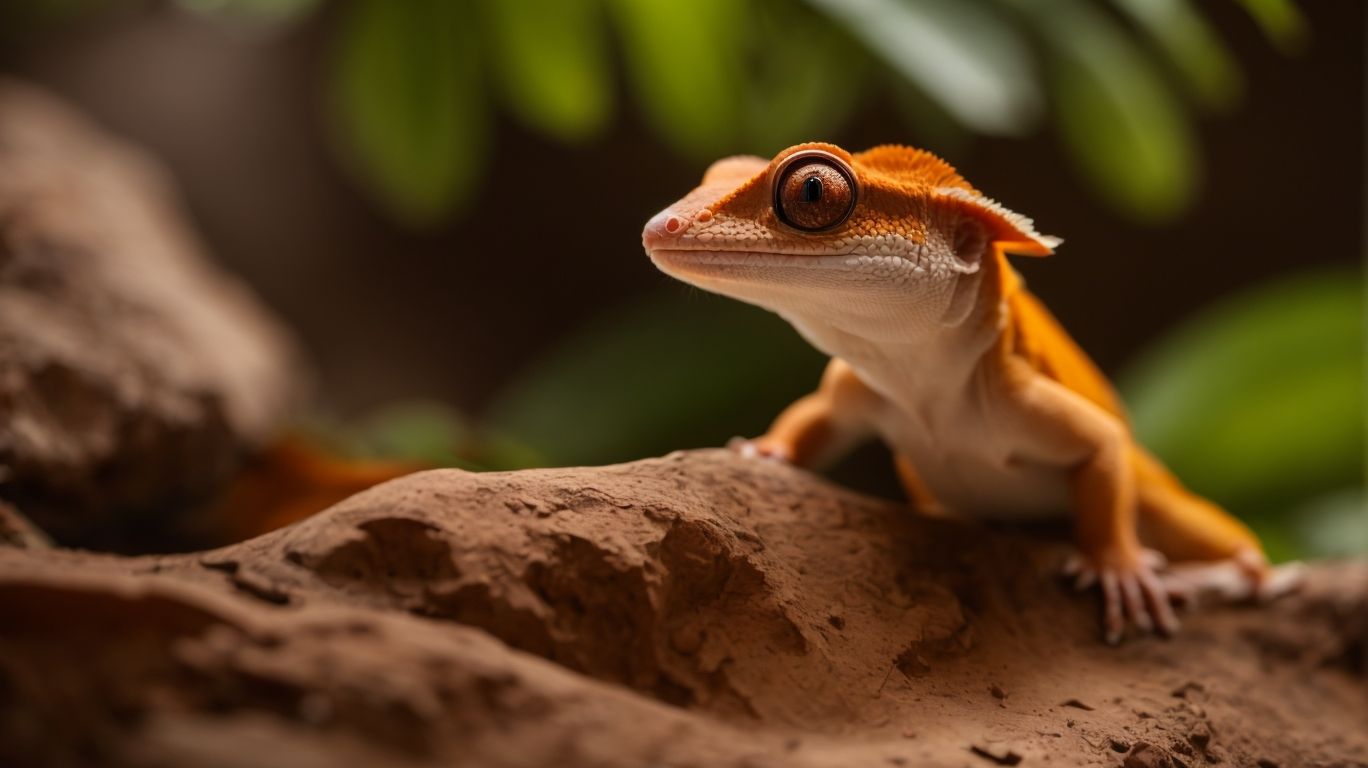
Getting Up Close and Personal with Mojave Ball Pythons
Table of Contents
Origin of Mojave Ball Pythons
Mojave ball pythons may be captivating creatures, but have you ever wondered where they come from? Let’s explore the origins of these intriguing snakes.
Native to sub-Saharan Africa, specifically the regions of Ghana, Togo, Benin, and Nigeria, mojave ball pythons have been a part of the African landscape for centuries. They thrive in the grasslands, savannas, and forested areas of these countries, adapting to a wide range of habitats.
Their unique name, “mojave,” comes from the Mojave Desert in the southwestern United States, where some breeders have successfully produced these morphs. However, it’s important to note that the Mojave Desert is not their natural habitat. These pythons were imported from Africa and selectively bred to produce the striking coloration and pattern that we see in the mojave morph today.
In the context of reptiles, a “morph” refers to a distinct genetic variation that results in unique physical characteristics, such as color, pattern, or scale arrangement. Morphs are often the result of specific genetic mutations and are highly sought after by collectors and breeders.
The mojave ball python morph is a result of specific genetic mutations impacting pigmentation-related genes. These mutations contribute to the unique visual traits observed in mojave morphs. Understanding the genetic underpinnings not only adds a layer of appreciation for the breeding practices but also unveils the intricate world of genetic diversity and selective breeding in reptiles.
Exploring the mojave ball python morphs not only enhances our understanding of these snakes but also opens the door to the intricate world of genetic diversity and selective breeding in reptiles.
Physical Characteristics of Mojave Ball Python
Mojave ball pythons are renowned for their captivating appearance. Their unique morph showcases a striking coloration and pattern that sets them apart from other ball python variations. One of their defining features is their pale, beige base color, which is complemented by dark, chocolate-colored blotches. These blotches vary in size and shape, giving each snake a distinct and mesmerizing pattern.
In addition to their mesmerizing coloration, mojave ball pythons have a slender and streamlined body, making them agile and graceful in their movements. They have a relatively small head, with piercing eyes that seem to hold a mysterious intelligence. This combination of physical traits creates a visually stunning snake that commands attention wherever it goes.
Mojave ball pythons typically grow to be around three to five feet in length, making them a manageable size for most reptile enthusiasts. They have a muscular build, giving them strength and agility, but their docile nature makes them easily handleable. This combination of size and temperament makes mojave ball pythons a great choice for both beginner and experienced snake owners.
As with all ball pythons, mojaves have heat-sensing pits on either side of their face, allowing them to locate prey with incredible precision. This unique feature, combined with their nonvenomous nature, makes them constrictors, meaning they capture and subdue their prey by wrapping their bodies around it and suffocating it. This natural hunting behavior is both fascinating and captivating to witness.
The Behavior and Temperament of Mojave Ball Pythons
When it comes to the behavior and temperament of Mojave ball pythons, there are a few key characteristics that make them unique and fascinating. These snakes are known for their docile nature, making them a popular choice for snake enthusiasts of all experience levels. Unlike some other snake species, Mojave ball pythons are generally calm and easy to handle.
One of the reasons why Mojave ball pythons have such a good temperament is because they are slow-moving snakes. They are not typically prone to sudden movements or aggression, which makes them great pets for those who may be a bit wary of handling snakes. They are also not known to be overly defensive or bite-prone, making them a safe choice for snake owners.
Mojave ball pythons are also known for being relatively inactive during the day. They are primarily nocturnal, which means they are most active during the night. This can be beneficial for those who have busy schedules during the day and are looking for a snake that won’t require constant attention.
In terms of behavior, Mojave ball pythons are generally solitary creatures. They are not social animals and prefer to spend their time alone. However, this doesn’t mean that they don’t enjoy human interaction. These snakes can still form bonds with their owners and may even enjoy being handled and stroked.
The Dietary Needs of Mojave Ball Pythons
Mojave ball pythons have specific dietary needs that are essential to their health and well-being. As reptiles, they are carnivores, meaning their diet consists solely of meat. In the wild, they feed primarily on small mammals, such as mice and rats, which provide the necessary nutrients and energy they require to thrive.
As a responsible owner, it’s important to mimic their natural diet when feeding your Mojave ball python in captivity. This means offering them pre-killed or frozen-thawed rodents. It’s crucial to never feed them live prey, as this can pose a danger to both the snake and the prey animal. Live prey can inflict injuries on the snake during feeding, and there’s also a risk of the prey animal fighting back and injuring the snake.
When it comes to portion sizes, it’s essential to feed your Mojave ball python appropriately based on their size and age. Young snakes will require smaller prey items, such as pinky mice, while adults will need larger prey, such as adult mice or rats. It’s important to ensure that the prey item is approximately the same width as the snake’s widest point to avoid any digestion issues.
Feeding frequency also varies depending on the age of the snake. Young Mojave ball pythons should be fed every 5 to 7 days, while adults can be fed every 7 to 10 days. It’s crucial to monitor your snake’s body condition and adjust feeding frequency accordingly. Overfeeding can lead to obesity and other health issues, while underfeeding can result in malnutrition.
In addition to providing the appropriate prey items, it’s important to offer your Mojave ball python a clean water source at all times. Snakes obtain most of their hydration from their prey, but having a water bowl available is essential for them to drink and soak if needed.
Housing Your Mojave Ball Python
Creating a suitable and comfortable living environment for your Mojave ball python is crucial for their overall well-being and happiness. These snakes are primarily solitary creatures that require a spacious enclosure to thrive. When it comes to housing your Mojave ball python, there are a few key factors to consider.
First and foremost, the size of the enclosure is essential. A tank or terrarium that is at least 36 inches long, 18 inches wide, and 12 inches high is recommended for adult Mojave ball pythons. Young snakes can start in smaller enclosures and gradually transition to larger ones as they grow. Providing ample space allows them to stretch out and explore their surroundings.
Next, it’s important to ensure the enclosure has proper ventilation. Mojave ball pythons require a humidity level of around 50% to 60%, but stagnant air can lead to respiratory issues. Good airflow helps maintain a healthy environment, so be sure to include ventilation holes or a screen top on the enclosure.
Maintaining the appropriate temperature gradient is crucial for Mojave ball pythons. They require a warm side and a cool side in their enclosure, with a temperature range of 80°F to 90°F on the warm side and 75°F to 80°F on the cool side. Providing a temperature gradient allows the snake to regulate its body temperature as needed.
It’s essential to include hiding spots and enrichment in the enclosure. Mojave ball pythons are secretive snakes that appreciate having multiple hiding places where they can feel safe and secure. You can use reptile hides or create DIY hides using rocks, logs, or other materials. Adding branches, foliage, or other natural elements can also enhance their environment and provide opportunities for exploration.
In addition to the physical space and temperature considerations, providing appropriate lighting is crucial for the well-being of Mojave ball pythons. While these snakes do not require UVB lighting like some other reptiles, a proper day and night cycle is important for their overall health. Consider using a low-wattage light bulb or a reptile-specific heat lamp to create a day/night cycle in the enclosure. This not only helps regulate their circadian rhythm but also contributes to a natural and comfortable living environment.
Remember to monitor your snake’s behavior and adjust the lighting schedule accordingly. Providing a consistent day and night cycle contributes to the overall health and contentment of Mojave ball pythons in captivity.
Finally, regular cleaning and maintenance of the enclosure is essential for the health of your Mojave ball python. Clean any waste or soiled substrate promptly, and regularly replace the substrate to maintain cleanliness and prevent odor buildup.
The Lifespan of Mojave Ball Pythons
Mojave ball pythons, like any living creature, have a limited lifespan. Understanding the average lifespan of these snakes is essential for those considering them as pets. The lifespan of a Mojave ball python can vary depending on various factors such as genetics, diet, and overall care.
On average, Mojave ball pythons can live for 20 to 30 years in captivity, but there have been instances where they have lived beyond 30 years with proper care. It’s important to note that these are just general estimates, and individual snakes may live shorter or longer lives.
Proper care plays a crucial role in determining the lifespan of Mojave ball pythons. Providing a suitable and enriched habitat, a balanced diet, and regular veterinary care are all essential for their well-being. Stress, improper diet, and inadequate living conditions can negatively impact their health and potentially shorten their lifespan.
Additionally, genetics also play a role in the lifespan of Mojave ball pythons. Some snakes may have underlying genetic conditions or health issues that can affect their longevity. It’s important to research the breeder and ensure that you are obtaining a healthy snake from a reputable source.
Final Thoughts: Is a Mojave Ball Python Right for You?
As we come to the end of this blog post, you may be wondering if a Mojave ball python is the right choice for you. While these snakes are fascinating and beautiful creatures, owning one does require a certain level of commitment and responsibility.
First and foremost, it’s important to consider your level of experience with snakes. Mojave ball pythons are known for their docile nature, making them great pets for both beginners and experienced snake owners. However, if you are a first-time snake owner, it’s essential to do your research and be prepared to provide the necessary care and attention they require.
Another factor to consider is the space and time commitment. Mojave ball pythons require a spacious enclosure with proper heating, humidity, and enrichment. They also need regular feeding and cleaning. If you have limited space or a busy schedule, you may need to consider whether you can provide the necessary care and attention they require.
Lastly, it’s important to consider any potential allergies or phobias you or your family members may have. Some people may be allergic to snake skin or have a fear of snakes, which can make owning a Mojave ball python challenging.
In conclusion, while the Mojave ball python can make an incredible pet, it’s critical to weigh your comfort, time, and ability to provide for its needs against your interest in owning one. Make sure you’re making an informed decision, as responsible ownership ensures both your happiness and the snake’s well-being.
Related Posts

Incubating Crested Gecko Eggs: Essential Techniques and Tips
Crested geckos are fascinating reptiles that are known for their…

Red Crested Gecko Health: Common Issues and Preventive Care
Are you a proud owner of a red crested gecko?…

Creating the Ideal Environment for Your Red Crested Gecko
Do you own a red crested gecko or are you…

No Comments